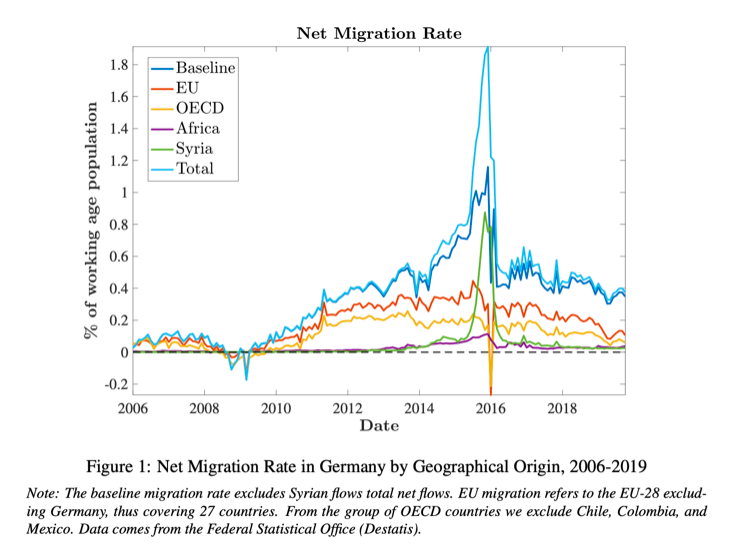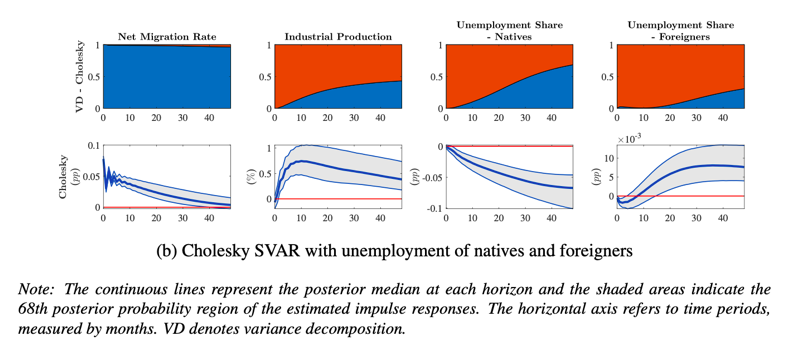
What is the macroeconomic impact of migration in the second-largest destination for migrants after the United States?
In this paper, we uncover new evidence on the macroeconomic effects of net migration shocks in Germany using monthly data from 2006 to 2019 and a variety of identification strategies in a structural vector autoregression (SVAR). In addition, we use quarterly data in a mixed-frequency SVAR.
While a large literature has analyzed the impact of immigration on employment and wages using disaggregate data, the migration literature in the context of macroeconometric models is still limited due to a lack of data at high frequency. Interestingly, such data is available for Germany. The Federal Statistical Office (Destatis) has been collecting monthly data on the arrivals of foreigners by country of origin on the basis of population registers at the municipal level since 2006. The figure below shows the net migration rate by origin.

Key takeaways
Migration shocks are persistently expansionary, increasing industrial production, per capita GDP, investment, net exports and tax revenue.
Our analysis disentangles the positive effect on inflation of job-related migration from OECD countries from the negative effect of migration (including refugees) from less advanced economies. In the former case, a demand effect seems prevalent while in the latter case, where migration is predominantly low-skilled and often political in nature (including refugees), a supply effect prevails.
In the labor market, migration shocks boost job openings and hourly wages. Unemployment falls for natives, driving a decline in total unemployment, while it rises for foreigners (see figure below). Interestingly, migration shocks (blue area in the first row) play a relevant role in explaining fluctuations in industrial production and unemployment of both natives and foreigners, despite the bulk of these being explained by other shocks (red area in the first row), like business cycle and domestic labor supply.

We also shed light on the employment and participation responses for natives and foreigners. Taken together, our results highlight a job-creation effect for natives and a job-competition effect for foreigners.
Conclusion
The COVID-19 recession may trigger an increase in migration flows and exacerbate xenophobic sentiments around the world. This paper contributes to a better understanding of the migration effects in the labor market and the macroeconomy, which is crucial for migration policy design and to curb the rise in xenophobic movements.
Connect with the authors
- Niccolò Maffei-Faccioli ’15 (Macroeconomic Policy and Financial Markets) is a PhD candidate in Economics at Universitat Autònoma de Barcelona and Barcelona GSE (IDEA).
- Eugenia Vella is a Lecturer at University of Sheffield.
About the BSE Master’s Program in Macroeconomic Policy and Financial Markets
